Here’s what I would recommend doing to figure out what is causing a Mac to be slow. If you’re getting the spinning beach ball a lot, you probably are hitting either CPU or Disk constraints. This will help identify what the cause is, after that you’ll have to figure out how to resolve the issue.
1 – Restart or reboot. You obviously don’t want to have to reboot every hour, but if you haven’t rebooted in a couple days, this gets you off to a clean start.
2 – Make sure Parallels isn’t running. While it is great to use windows apps, using Parallels basically means your computer is running another computer in addition to itself.
3 – Try disconnecting external drives. Your mac does all sorts of stuff to try and keep it’s disks organized, disconnect (at least for a few) to see if that makes it run faster.
4 – Use Activity Monitor to see what is keeping the computer busy…
Run Activity Monitor by using Spotlight to find it…

Once it is running, you will see a list of all the running processes… I like to go to the CPU tab and sort by % CPU:
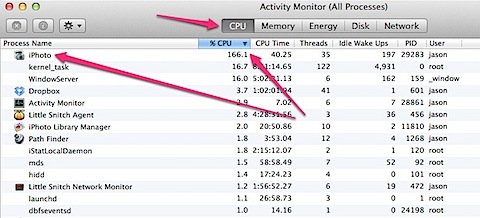
In that screenshot, you can see that iPhoto is currently holding my computer hostage. I was doing a big import, it’s not usually that bad.
Other stuff that tends to be obscure but problematic:
- mds = spotlight indexing
- mdworker = something else for spotlight
- backupd = time machine
You can look at the other tabs too – see if memory or disk shows something off the charts. Here’s my memory (I have 8gb installed).

Here’s my disk usage:

Similar to the cpu table, you can sort by different columns to find what is the biggest user of disk activity or memory…
5 – Turn off Time Machine (at least temporarily)From System Preferences (apple menu in upper left –> System Preferences…)
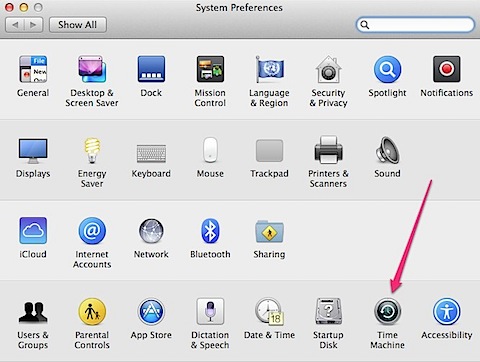
You can turn it off for a few hours to see if that helps (give yourself a reminder to turn it back on). You can also exclude certain folders from being backed up via Time Machine. Here’s a screenshot where I’ve told it not to back up my external drives. You can set individual folders here, like the Parallels folder.
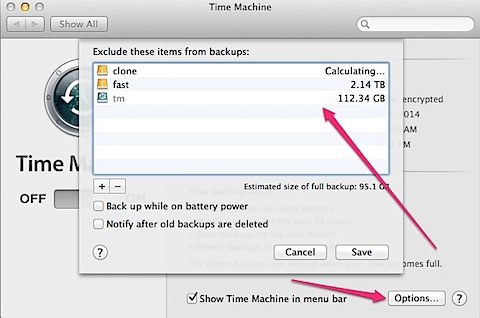
If Time Machine is causing the slowness, you can use something like Time Machine Editor to have it only run when you’re not doing work.
6 – Turn off Spotlight, at least for external drives.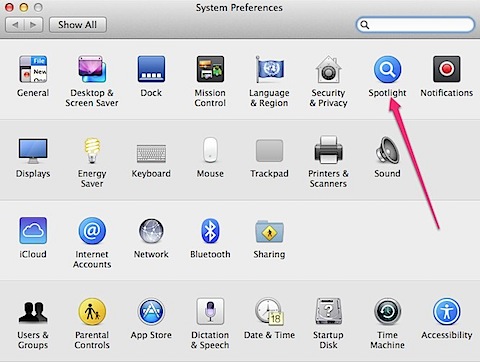
If you turn off spotlight completely, just be aware that when you turn it back on, it will try to scan your hard drive again… typically takes several hours where your computer will be slow again. I would turn it on again before going to bed so that it could run overnight.
Similar to Time Machine, I have it exclude certain folders, especially on external drives. Otherwise, it tries to look at the drives to make sure it can find stuff when you search for it… You can also uncheck some of the categories in the “Search Results” tab — I would leave Applications checked at a minimum, other stuff is a judgment call.

7 – Turn off unneeded Login Items
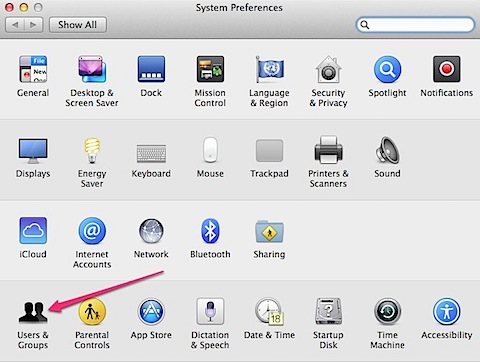
I’ve got a lot of stuff running when I log in, but they are all things I use regularly. If you see stuff you don’t use, or don’t use frequently, you can remove it.
Sometimes you have to click the padlock to make changes… not obvious if you’re not used to making changes like this.
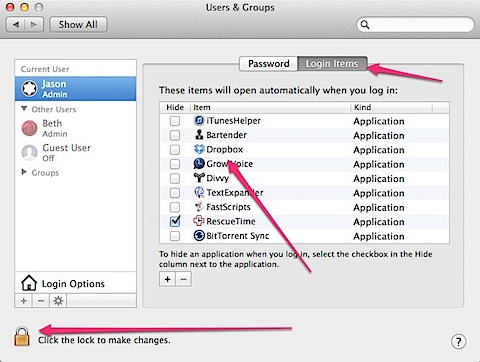
There are some helpful articles online too…